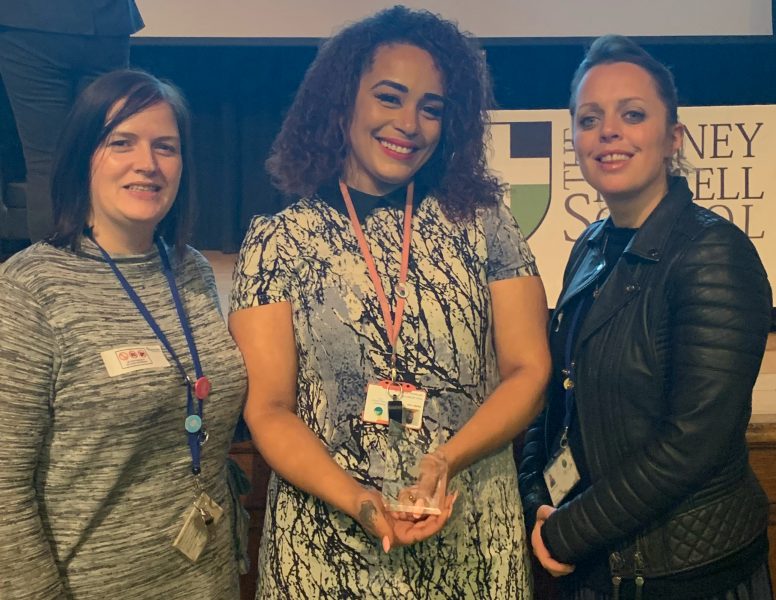The Power of Community in Supporting Inclusion
Michelle Daley reflects on her visit to Brimsdown School

In January 2020 the BBC reported on Brimsdown Primary School in Enfield, North London, featuring Alysha Allen, a Deaf teacher using sign language to teach her pupils. Without hesitation I arranged a school visit to learn more about their practices around inclusion of Disabled Children.
During my successful visit to Brimsdown Primary School I had the opportunity to look around the school and meet with some of the teachers and pupils (the visit did not include parents). The tour was conducted by Headteacher, Dani Lang, who gave me the background on the school profile.
Throughout the tour I saw intersectional (meaning people’s different identities e.g. gender, impairment, age, race, etc) representation of both staff and pupils. I found this to be a positive experience as this reflected the people of the community.
About Brimsdown Primary School
The school is based in an under-resourced part of London and a large majority of the children that attend the school are from households with low income and/or are newly arrived in England. Unemployment, including other social issues which can impact on the schooling of the child and parent involvement, is high. There are 627 children on roll which is a typical school size for London. Seventy-five percent of the children speak English as a second language and many of the children’s parents do not speak English, which can make parent involvement difficult. Their ages range from 3 to 11, with mixed gender. The school has more than double the average number of pupils with an Education, Health and Care Plan (ECHP) and a higher than average number of children on Pupil Premium. This means that there are a range of provisions to support the children in school with things such as meals, language support.
Inclusive Community, Inclusive school
I also wanted to better understand how Brimsdown Primary School had created opportunities to support ALL their pupils including Disabled pupils within their school. I noticed that the school website slogan has an emphasis on the principles community. It states that:
“The school community is calm and purposeful. Pupils’ very positive attitudes to their learning play a significant part in the good progress they make.” (Brimsdown Primary School).
Brimsdown Primary School does not segregate from community and the community does not segregate from the school. For example, the school has a good practice of supporting and harnessing the professional development of people from the local area.
Two of the teachers I met had come from the community, starting their careers at the school as classroom assistants and later training to become teachers. These two teachers now play a significant role in promoting and supporting the inclusion of Disabled Children alongside their non-disabled peers.
Support for Disabled pupils
Brimsdown Primary School has created support and a culture within their school to make sure Disabled children are included in the whole school life. As part of the school curriculum all children are taught British Sign Language (BSL) and some of the lessons are delivered using BSL, creating more of a positive attitude towards Disabled pupils. Having all children learn BSL helps to address the communication barriers, including outside of the classroom, for example in forming friendships, where communication often stops without this provision. This example of breaking down communication barriers has helped to create a positive learning environment that supports the connection and inclusion of pupils, both inside and outside of the school.
Brimsdown Primary School has an onsite resource for Deaf and hearing impaired pupils and a nurture provision, these are additional educational support outside of the standard classroom. The nurture provision has resulted in low exclusion rate. The low exclusion rate is also promoted through building relationships and working with other agencies to support children to remain in school.
During the tour of the school there was a separate BSL class being delivered to a small group of Deaf pupils. Prior to these children attending the school, the majority of pupils had limited or no BSL communication skills. It was great to speak with the children, who were really excited to show off their BSL Communication skills. They had a lot of questions! There was one child that got my attention who spoke very positively about her different identities (religion, background, impairment and gender). This particular child proudly told me that she was a Deaf, Muslim, Girl and also shared what she wanted to do when she left school.
Although the interaction with the children was brief, their messages were profound. Given the negative attitudes and exclusion of Disabled people from society, it was good to hear that the children had such a positive outlook about their futures and could picture themselves as being part of the world. The School had created positive experiences around differences in people which helped these children to be proud of their intersectional identities as Disabled children.
Promoting equality in education and community
In conclusion, Brimsdown Primary School is based in a community that has many social disadvantages and inequalities which can impact on the school. It is not possible for the school to easily ignore these issues around inequality because there are simply too many. However, the introduction of Disabled pupils to the school and the influence of the diverse community has most definitely helped to improve the schools support for inclusion for all children at the school. It has also helped to promote the wider issues around inequalities within the community and the education system.
Thank you to the staff and pupils of Brimsdown for supporting our visit to their school.
School website: www.brimsdown.enfield.sch.uk
Michelle Daley
Director, ALLFIE
![ALLFIE [logo]](https://www.allfie.org.uk/wp-content/themes/allfie-base-theme/assets/img/allfie-logo-original.svg)



